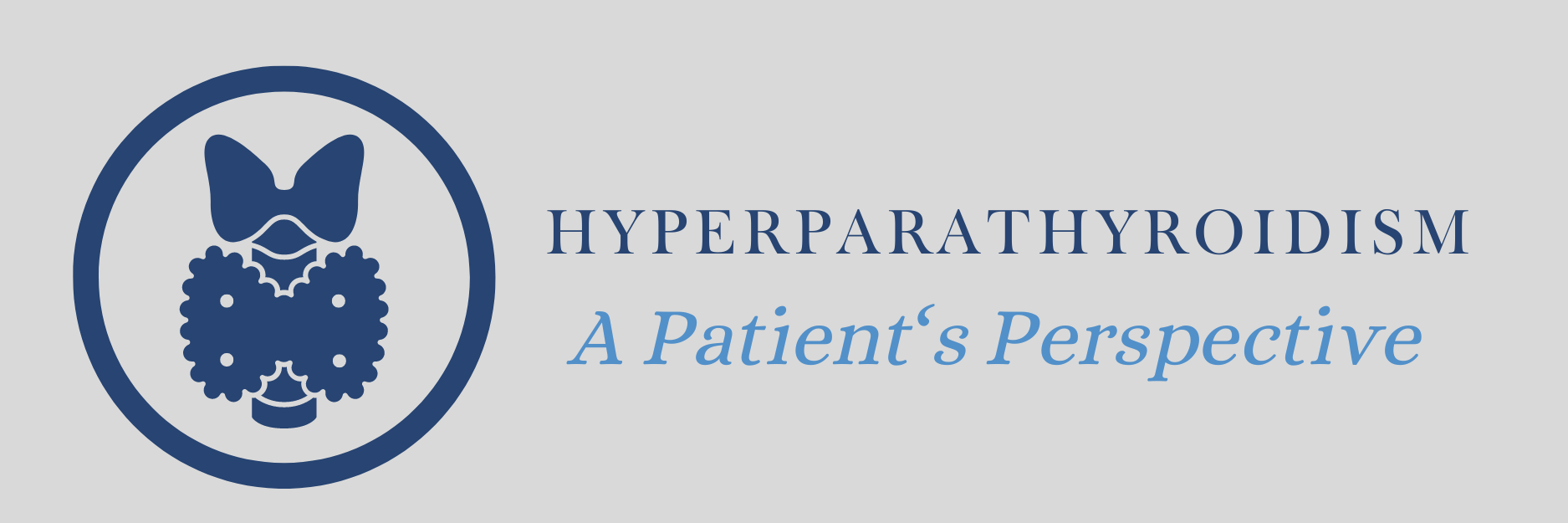Episode 2: Types of Hyperparathyroidism
In episode 2 Lisa Marie explores the different presentations of hyperparathyroidism, such as classic presentation, normocalcemic presentation, and normohormonal presentation, the latter of which, can be tricky to diagnose and need expert medical intervention.
ABBREVIATIONS:
- HPT - Hyperparathyroidism.
- nHPT - Normocalcemic Hyperparathyroidism
- PTH - Parathyroid Hormone Level.
CLARIFICATIONS:
Hyperplasia verses single adenoma.
- Hyperplasia affects all four glands and the glands become enlarged.
- A single adenoma usually a benign (non-cancerous) tumour of the gland.
RESOURCES
The information shared in this podcast has been provided by several sources. These include outcomes from personal consultations with medical professionals, my own experiences, published research by expert medical professionals, and the NHS website. Please click on the links below for more information.
Hyperparathyroidism
https://www.nhs.uk/conditions/hyperparathyroidism/
Normocalcemic Hyperparathyroidism
https://www.ncbi.nlm.nih.gov/pmc/articles/PMC7923978/
Hyperparathyroidism Support & Information - Patient to Patient Support Group
https://www.facebook.com/groups/406980976340533
NICE Guidelines
https://www.nice.org.uk/guidance/ng132
DISCLAIMER: Lisa Marie is not in any way medically trained, she is not providing medical advice, and the information that is shared is in no way a substitute for qualified medical advice. If you believe you may have this disease, then you must seek the most appropriate medical advice, this podcast aims to help you navigate your way to the right medical support and diagnosis.
Transcript
And there is more information to be found on each of these in our support group. I will put the links to our support group in the show notes. So the first Presentation of hyperparathyroidism is what we would refer to as a classic presentation. This will often include high calcium and a high parathyroid hormone level.
Sometimes this also includes a very low
[:vitamin D level which can sometimes inhibit a full diagnosis because often specialists will want you to go on a course of vitamin D And come back in three, four, six months time and retest your blood and see what the figures are there to see increasing your vitamin D has had any bearing on the other two factors, your calcium and your hyperthyroid hormone level.
So this is often referred to as classic or textbook where one of the four parathyroid glands, sometimes more, will produce too much parathyroid hormone level. And this then results in abnormally high blood calcium level and a variety of other symptoms. Surgery, in this case, is usually the most common treatment.
This is known as a form of primary hyperparathyroidism. So a
[:primary cause for hyperparathyroidism. The second primary cause, is a presentation called normocalcemic hyperparathyroidism. And this is a presentation that I personally have had since my first surgery back in 2018.
ad my second surgery in March:So with normocalcemic hyperparathyroidism, Your presentation is likely to be normal calcium and high parathyroid hormone level. Now my presentation is absolutely normal calcium level, within range calcium level, elevated or high parathyroid
[:hormone level and in my case I have normal vitamin D.
This is a difficult one because It can cause problems in diagnosis amongst patients that can slip through the net because their calcium readings aren't high and therefore might not be put forward for surgery. So, it is usually discovered while a patient is being investigated for other issues such as low bone mineral density and osteoporosis and after other causes of hyperparathyroidism have been ruled out.
And again, surgery will be the most common treatment. In the UK, it's very difficult to navigate a diagnosis of hyperparathyroidism with normal calcium or normo calcemic hyperparathyroidism. That's simply because not all hospital trusts are up to speed with advances in the science
[:and therefore often the current Nice.
guidelines don't incorporate this advance in the science. So moving on to the next primary cause of hyperparathyroidism is normohormonal hyperparathyroidism. This presentation often presents with high calcium and a normal parathyroid hormone level. This is not a Anything that I have personally suffered with and I don't understand it.
As well as I understand the normal calcemic presentation. But it's often a misconception about this disease. It is the idea that if a patient has high calcium but normal hormone level, then there is no way that they could have this disease. As a result, just like normal carmic presentation, quite a few patients can slip through the net.
Moving on to the next type of hyperparathyroidism is the familial presentation, which can be high calcium normal or high parathyroid
[:hormone level. And this could be because someone in your family has or had hyper parathyroidism or hypercalcemia. Sometimes your doctor may suspect that you have a form of familial hyperparathyroidism, FH as it's known for short.
And there are many disorders that could point to this, including some genetic predispositions. I'll cover some of the genetics in a later episode and the importance of asking. so The final variation is secondary causes low or normal calcium and high parathyroid hormone level.
This is type of disease is a disease that's again, very difficult to identify. The most common causes can include kidney disease. vitamin D deficiency and problems absorbing vitamin D from weight loss, surgery, bowel disease, pancreatic disease, or other issues. So if you're presenting with low or normal calcium and high parathyroid
[:hormone level, then it's worth being aware of that presentation and raising that with your doctor, your GP, or your medical specialist.
Thank you for joining me and listening. Please join me as we move on to episode three, tests and scans for hyperparathyroidism.


